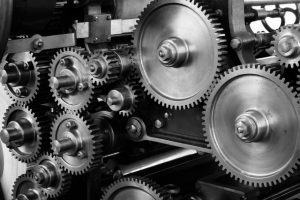
Stainless steel is often classified by its crystalline structure. When inspecting stainless steel under a microscope, you’ll see an array of crystals. There are four primary types of crystalline structures including ferric, martensitic, duplex and austenitic. Of those four types, austenitic is the most common. It still consists of the same iron and carbon as other types of stainless steel, but austenitic stainless steel features a specific crystalline structure.
What Is Austenitic Stainless Steel?
Austenitic stainless steel is characterized by a face-centered cubic crystalline structure. The crystals essentially look like cubes. Austenitic stainless steel is comprised primarily of iron that’s mixed with chromium, nickel and carbon. When compared to other types of stainless steel, it contains higher levels of chromium and nickel but lower levels of carbon.
Benefits of Austenitic Stainless Steel
Austentitic stainless steel is inexpensive. Research shows that it accounts for roughly two-thirds of all stainless steel produced globally. Because of its widespread use and popularity, austenitic stainless steel typically costs less than other types of stainless steel.
In terms of corrosion resistance, austenitic stainless steel is superior to most other types of stainless steel. As previously mentioned, it contains less carbon but more chromium than other types of stainless steel. Carbon makes steel more susceptible to corrosion, whereas chromium protects steel from corrosion. With a high ratio of chromium to carbon, austenitic stainless steel offers excellent protection against corrosion.
Other types of stainless steel contain a lower ratio of chromium to carbon. In other words, they contain higher levels of carbon and lower levels of chromium. This imbalanced combination gives them additional strength, but it makes them more vulnerable to corrosion. Austenitic stainless steel is protected from corrosion.
Another benefit of austenitic stainless steel is formability. According to ASM International, austenitic stainless steel is very formable. It can be easily formed, shaped and otherwise manipulated. Austenitic stainless steel isn’t particularly hard. It’s softer and more malleable than other types of stainless steel. These physical properties make it easy to form.
In Conclusion
All types of stainless steel have a crystalline structure. Austenitic stainless steel refers to steel with a face-centered cubic crystalline structure. Jargon aside, it contains high levels of chromium and low levels of carbon. It’s not the strongest type of stainless steel, but austenitic stainless steel is inexpensive, resistant to corrosion and very formable.
No tags for this post.